Since 2012 Perrier-Jouët has joined forces with the collectible design fair Design Miami to promote up-and-coming artists and designers who creatively express the champagne house’s Art Nouveau heritage in twenty-first-century terms.
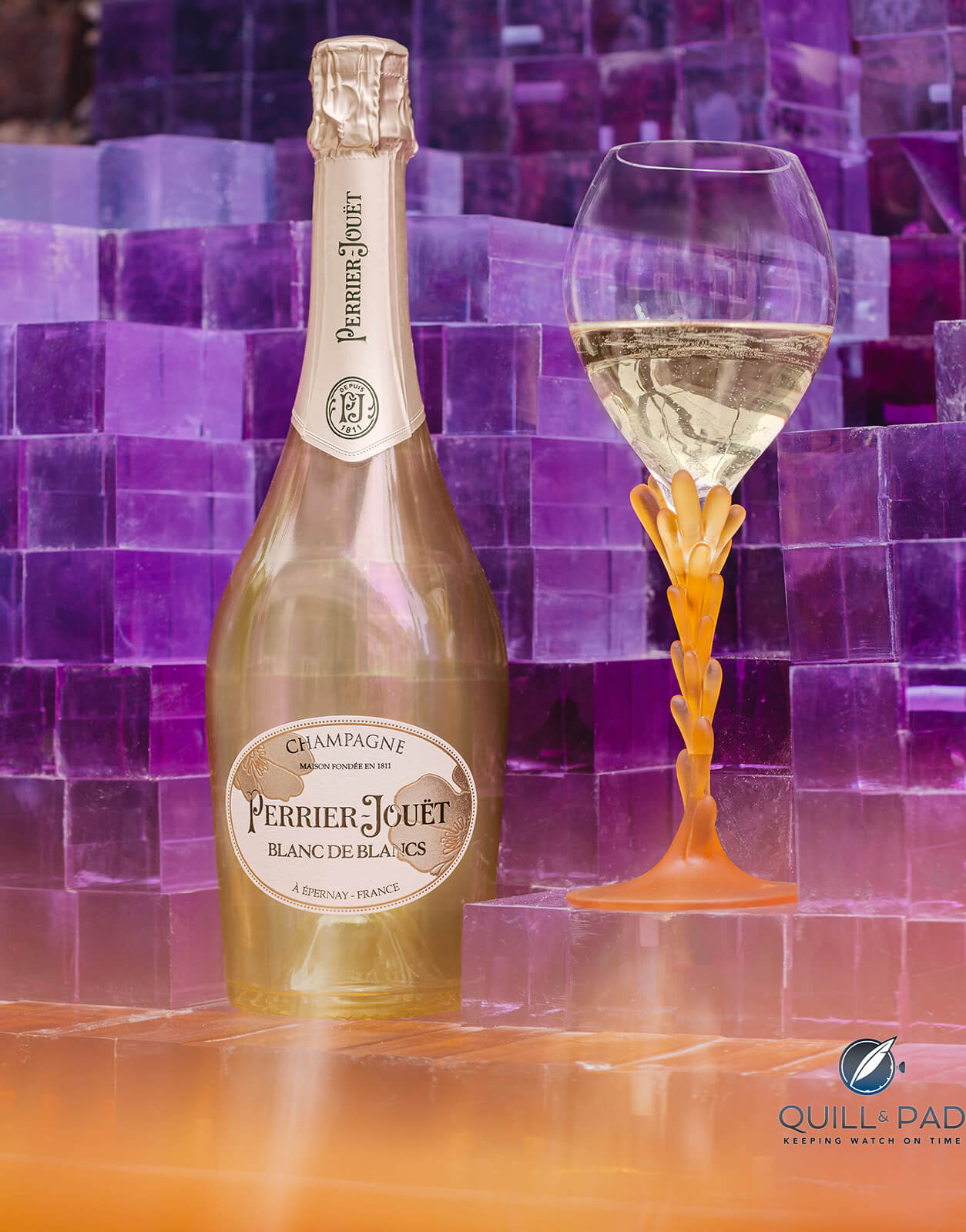
Perrier-Jouët Blanc de Blancs and a Metamorphosis champagne glass
For its eighth annual collaboration revealed in December 2019, Perrier-Jouët invited Milan-based designer Andrea Mancuso to conceive a new artistic champagne tasting ritual. A brand built on its founders’ attachment to art and nature, it had previously commissioned work throughout the years from established and emerging artists and designers such as Bethan Laura Wood, Daniel Arsham, Noé Duchaufour-Lawrance, Miguel Chevalier, Makoto Azuma, Tord Boontje, Studio Glithero, Simon Heijdens, Vik Muniz, Mischer’traxler, Ritsue Mishima, Andrew Kudless, and Luftwerk.
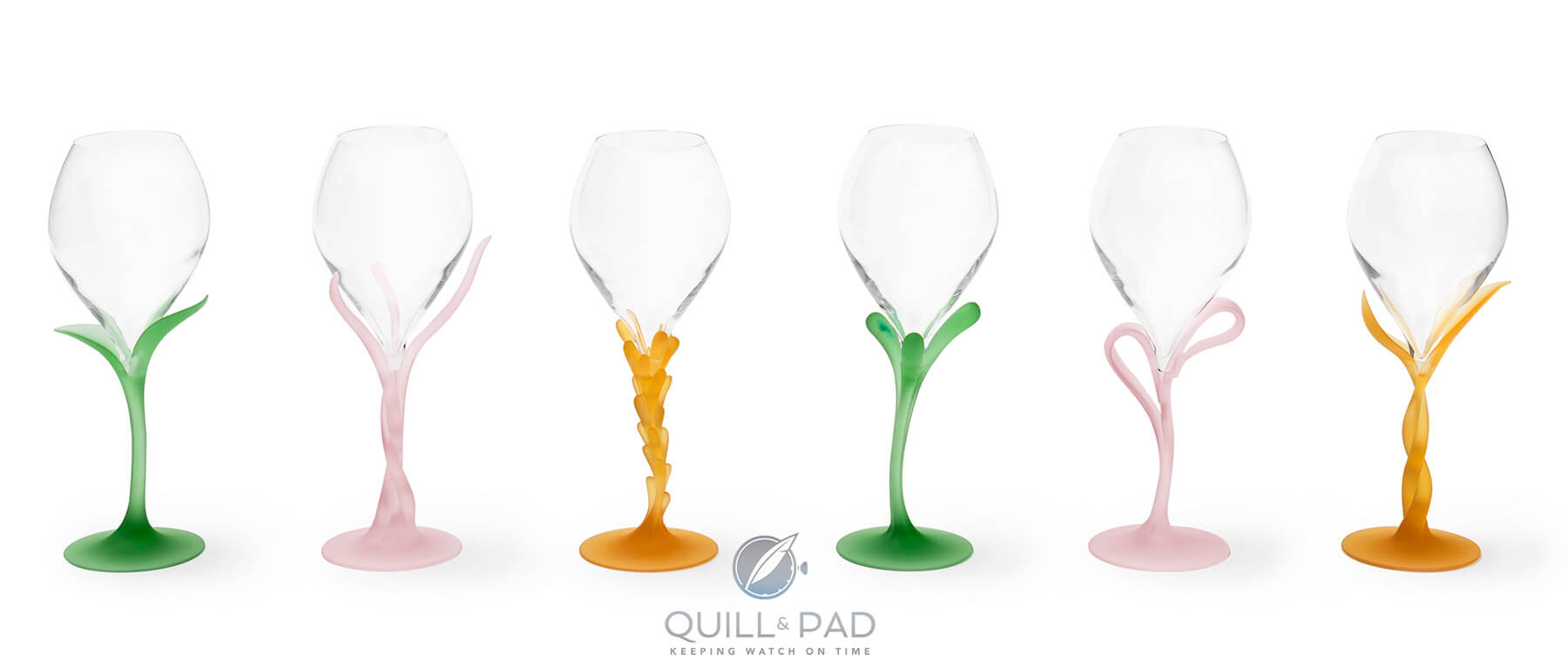
Perrier-Jouët Metamorphosis collection of handmade champagne glasses by Andrea Mancuso
With nature as his starting point, Mancuso conceived the Metamorphosis collection of six champagne glasses and a champagne bowl, which marry traditional craftsmanship and advanced technology. They explore the metamorphoses of nature and the way in which Perrier-Jouët transforms Chardonnay grapes into elegant, floral champagnes based on more than 200 years of savoir-faire.
Known for his objects, furniture, lighting, and installations that alter reality, mix the past with the present, elicit emotional connections with users, and stimulate curiosity by pairing the familiar with the unexpected, Mancuso’s approach to reimagining the world by turning the everyday into wonderment echoes Perrier-Jouët’s extravagant Art of the Wild universe in which vibrant, joyful nature re-enchants the quotidian.
His designs tell stories, create surprises and convey feelings, transporting audiences through history, culture, time, and space.
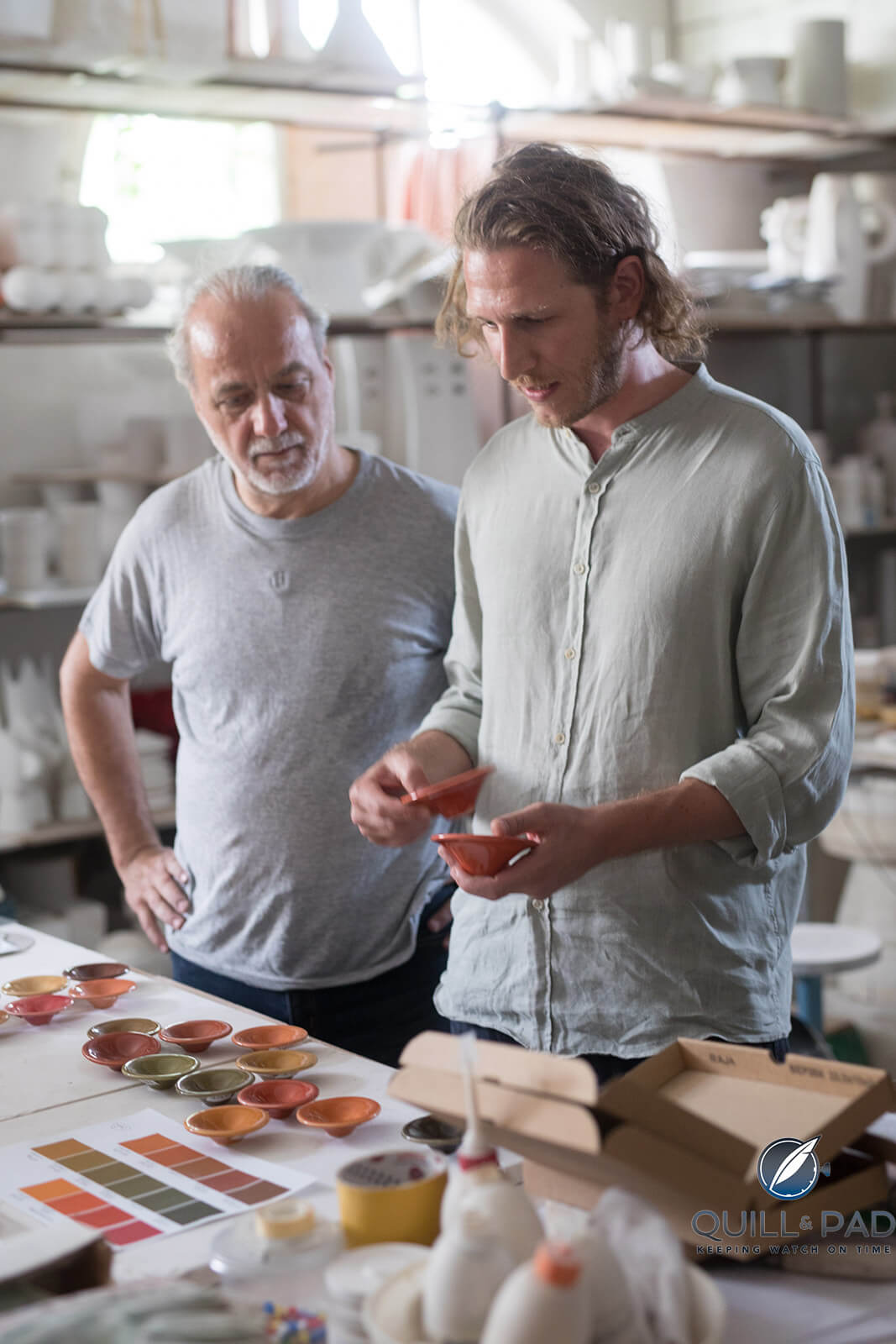
Designer Andrea Mancuso overseeing the making of Perrier-Jouët’s Metamorphosis collection of champagne glasses
Following Mancuso’s profound conversations and tastings with cellar master Hervé Deschamps at Maison Belle Époque – the historic home of the brand’s founding family in Épernay – the six glasses embody “the purest expression of nature,” according to the designer. They represent six different Perrier-Jouët cuvées, each imbued with its own distinct history and personality.
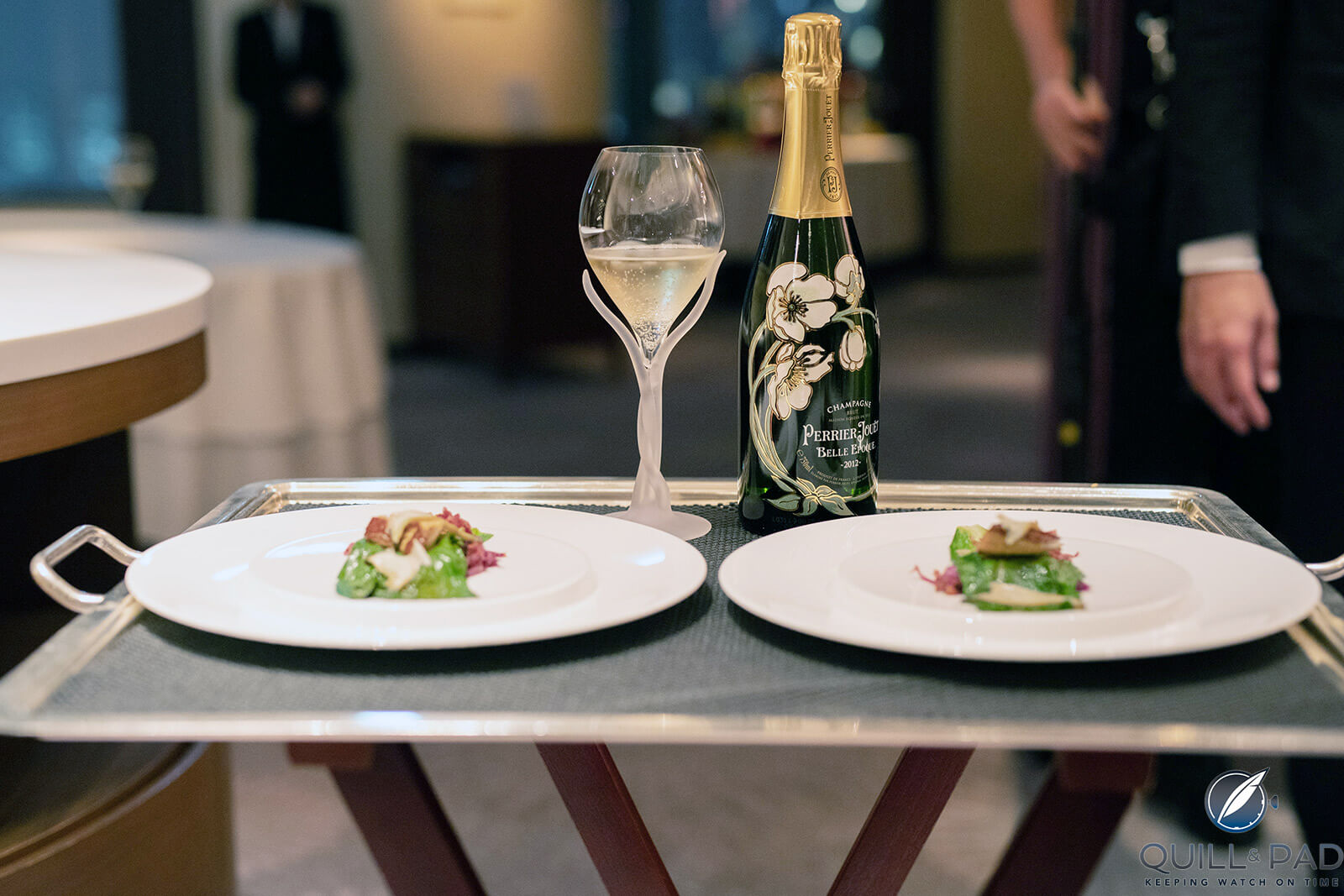
Perrier-Jouët Metamorphosis champagne glass
Deschamps notes, “The Perrier-Jouët non-vintage cuvées are captured with the unbridled growth of blooming nature, with roots and leaves climbing up the stem to embrace the bowl of the glass, whereas developed nature is interpreted with elegant, structured lines to evoke the Perrier-Jouët Belle Époque cuvées.”
After hundreds of drawings, the glasses then underwent experimentations in clay before 3D printing to see how they would look and feel in the hand. Manufactured by Murano-based glass artisans Berengo Studio through the age-old, highly-complex, time-consuming, and costly technique of lost-wax casting – favored by Art Nouveau artists – the glasses with intricate vegetal designs in subdued shades resemble delicate sculptures.
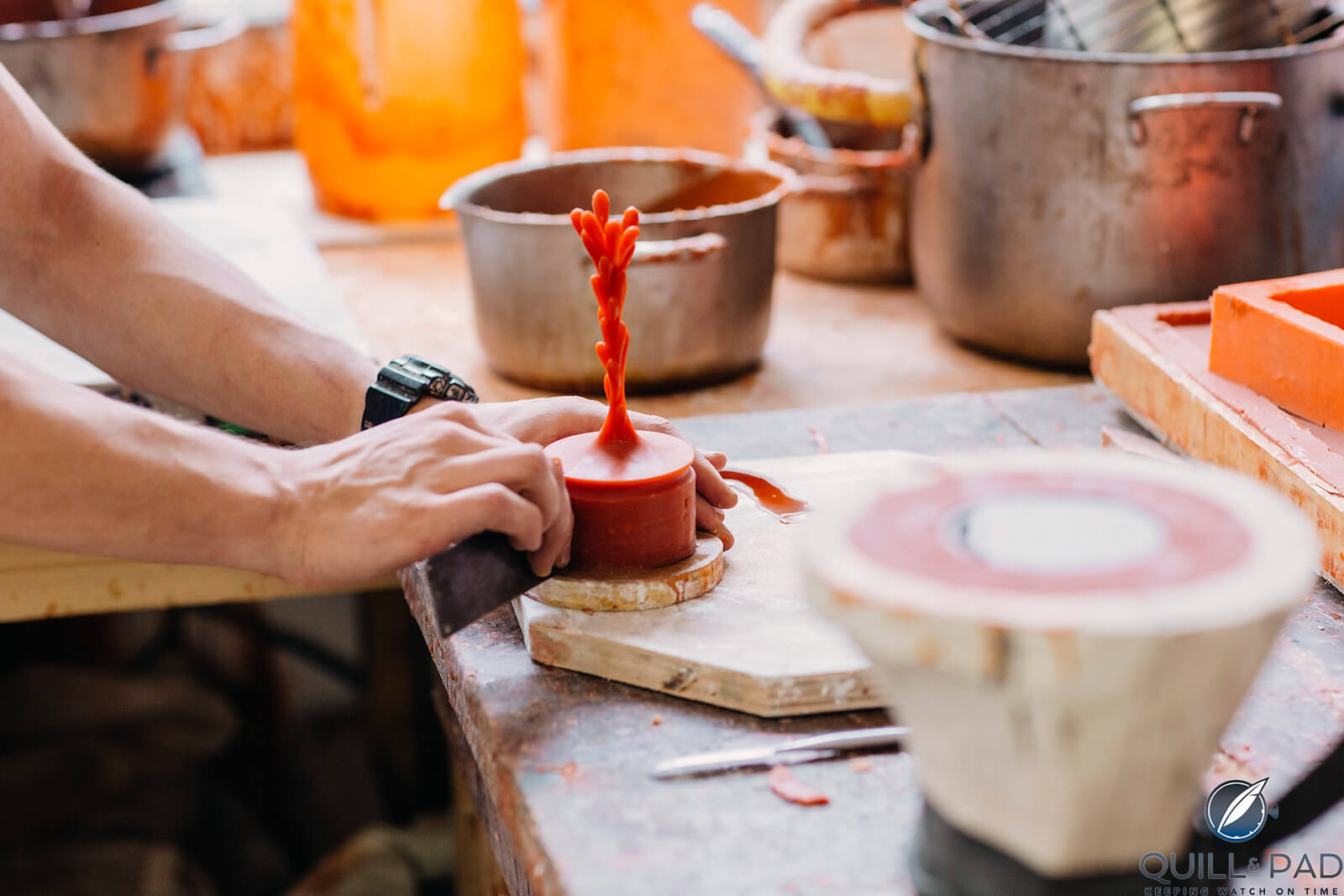
The making of Perrier-Jouët’s Metamorphosis champagne glasses using the lost wax casting technique
Each glass required a week to handcraft, and the development process involved much breakage. The same painstaking method was used for the champagne bowl, which reinterprets the iconic Japanese anemone motif adorning the Perrier-Jouët Belle Époque prestige cuvée bottle, originally designed for the house in 1902 by French Art Nouveau glass artist Émile Gallé.
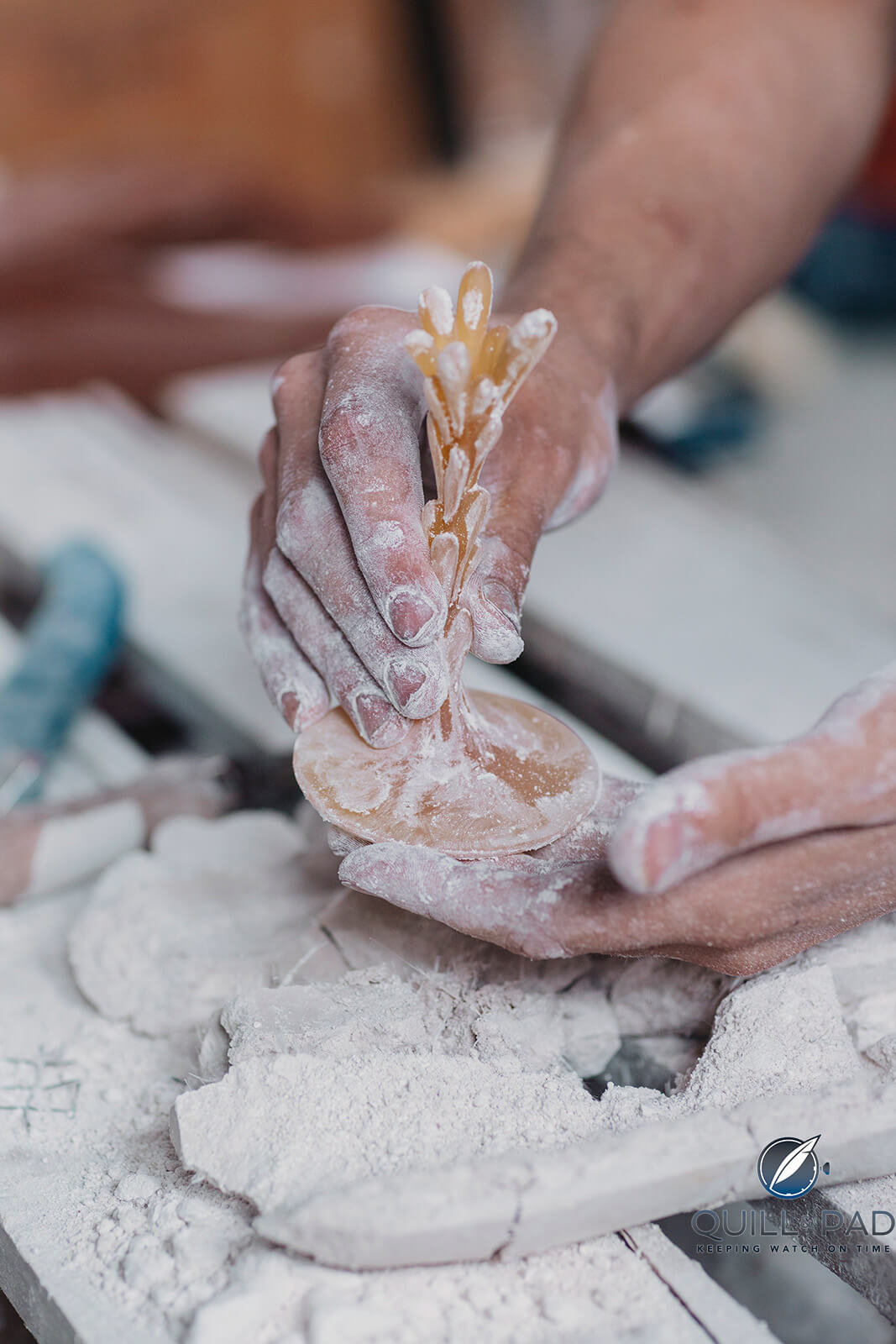
The making of Perrier-Jouët’s Metamorphosis champagne glass
Reflecting the tasting notes and characteristics that define each cuvée (Blanc de Blancs for example is vivacious), the glass bases adopt the shape of a curved plant stem with two green leaves, ribbon-like petals in rose pink, and bubbles flowing upwards or entwined stems in amber, above which sits the usual upper bowl of a champagne glass.
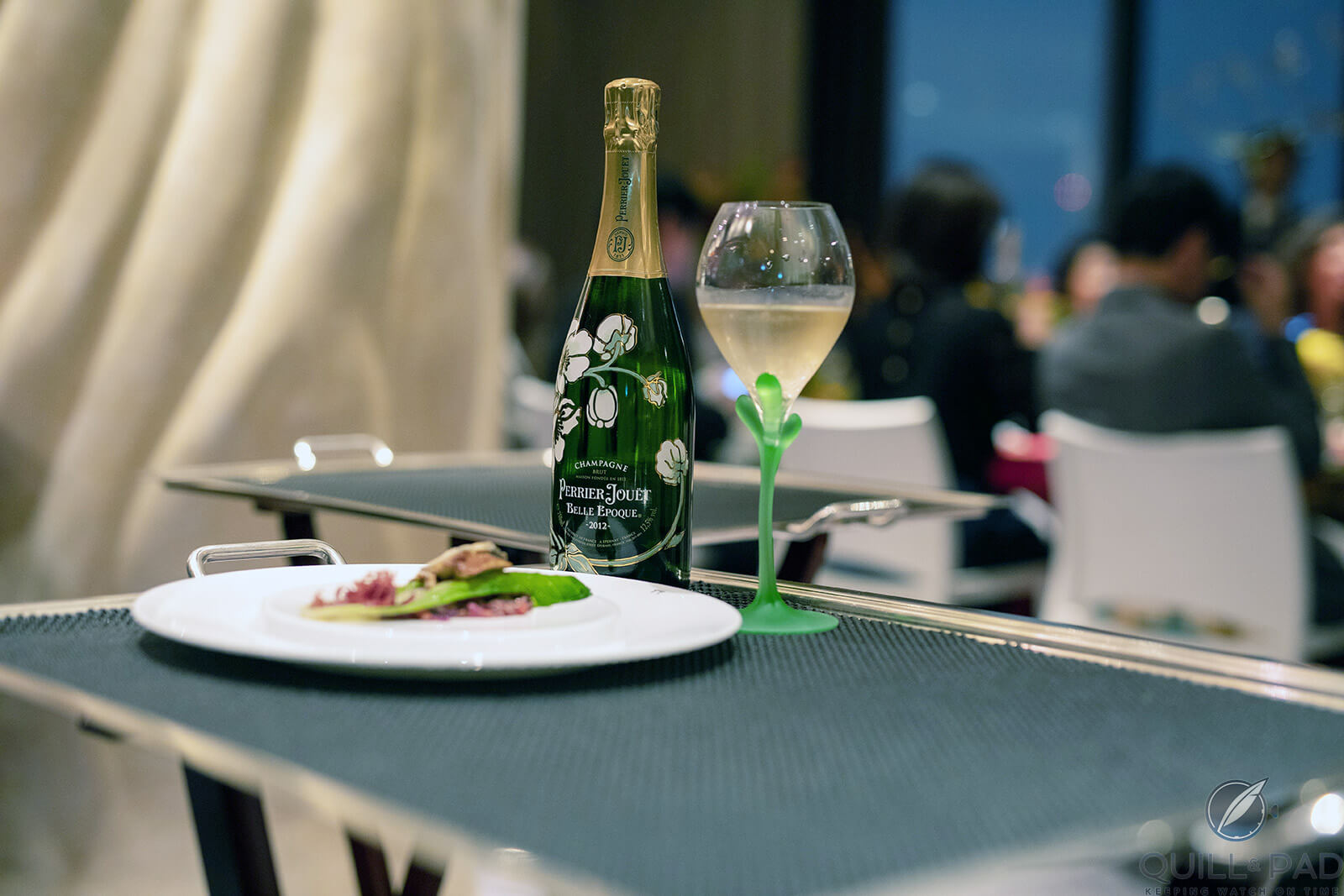
Perrier-Jouët champagne and Metamorphosis champagne glass
Green represents nature, pink the rosé cuvées, and amber the color of champagne. These are glasses designed to be drank from; the most important element for Mancuso is how the glasses feel when they are used to consume champagne.
Metamorphosis forms part of a new artistic champagne experience that relates “the whole complex, creative story of Maison Perrier-Jouët told through ritualistic objects and actions,” he adds.
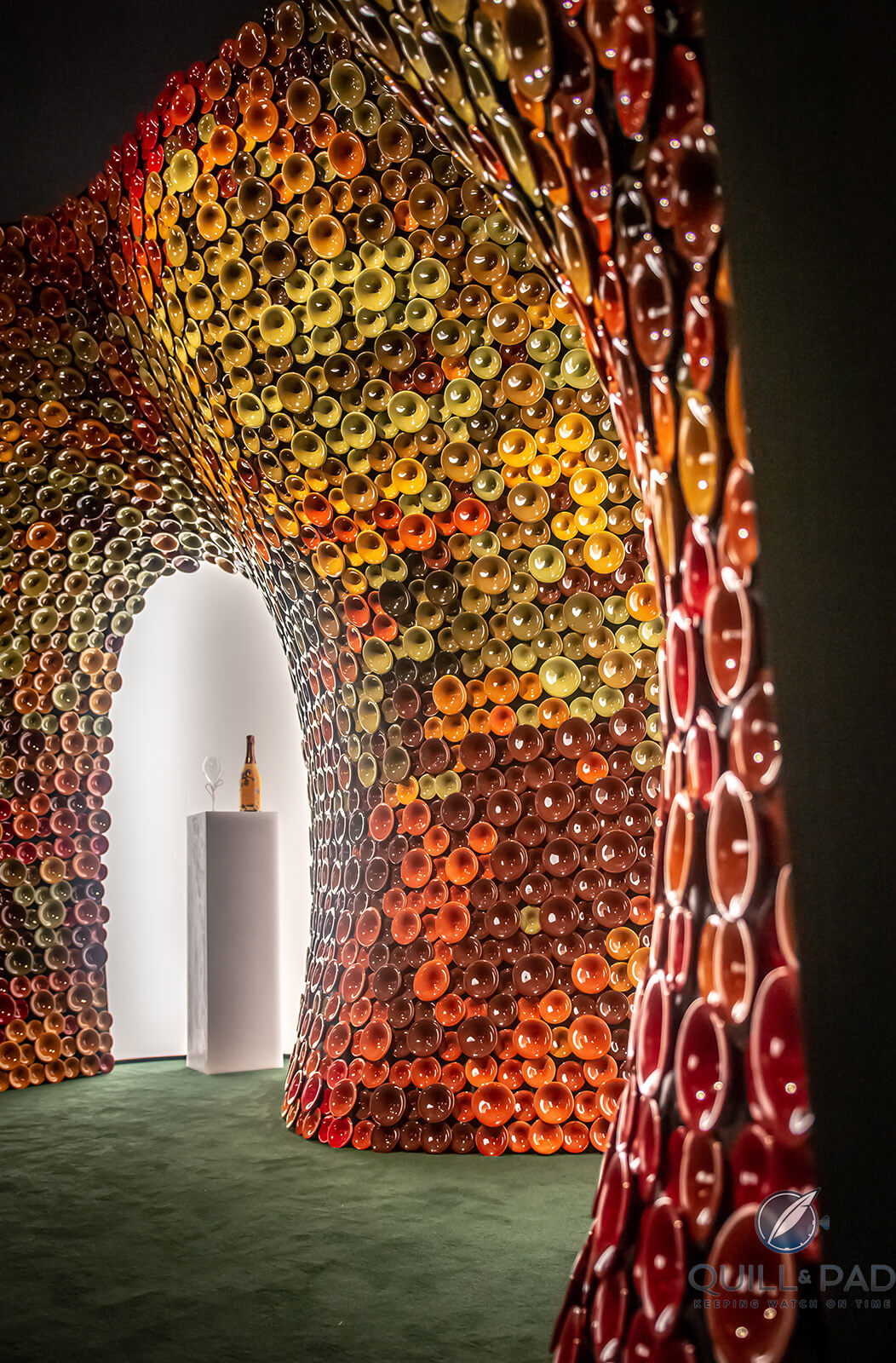
Perrier-Jouët Metamorphosis booth at Design Miami 2019
Inspired by the shadowy atmosphere of Perrier-Jouët’s cellars and the colors and light of its vineyards, Mancuso imagined an immersive installation showcasing the collection for Design Miami 2019 in collaboration with Italian ceramicists Alessio Sarri and Nuevoforme, which featured 11,000 mounted ceramic pieces in the shape of bottles maturing in the cellars, while the chromatic palette referenced the vineyards during harvest.
Mancuso concludes, “My encounter with Maison Perrier-Jouët is an ongoing conversation. A wonderful, inspirational dialogue about wine, of course, but also a shared vision of re-enchanting the world with reinvented nature.”
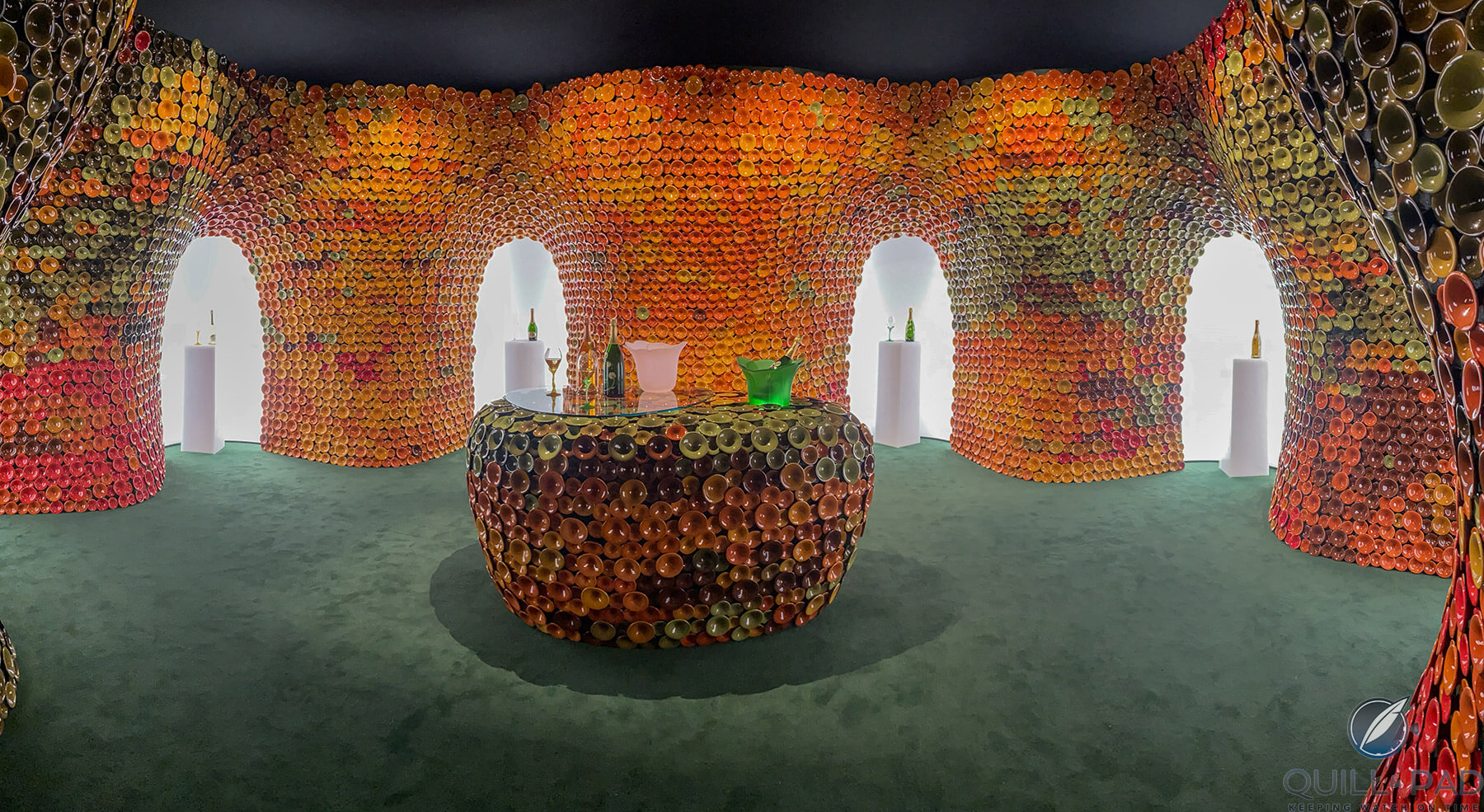
Perrier-Jouët Metamorphosis booth at Design Miami 2019
I sat down with Mancuso to talk about his creative process and the Perrier-Jouët collaboration.
Quill & Pad: You founded your own design studio, Analogia Project, with architect Emilia Serra in 2011. How did you first meet and why did you decide to work together?
Andrea Mancuso: We met at the Royal College of Art in 2008. I was working for Nigel Coates, at the time when he was the head of the architecture department, as well as Emilia’s tutor. We became good friends and decided to present a project together during the London Design Festival in 2011. Analogia #001 was a great success, and the next step was Milan Design Week in 2012. We presented Analogia #003 in the Ventura Lambrate area; the installation gained lots of attention from the press, and Milan became the base of Analogia Project’s studio. After a few years, we were involved in many different projects. In 2016, Emilia decided to focus on her research in academic and cultural projects and I kept leading the Analogia Project studio with my team.
Q&P: Tell me about your creative process each time you take on a new design project.
AM: The first approach to a new project is research. I look for books related to the subject I want to study. Every project is an opportunity to learn. The material/manufacturing I favor is one I have never explored before as when I acknowledge the manufacturing limits of certain materials, I somehow start limiting my imagination. Behind each brand, there are stories that have not been told yet; I translate those stories with my own style.
Q&P: Describe the Metamorphosis glasses you created with Adriano Berengo in Murano.
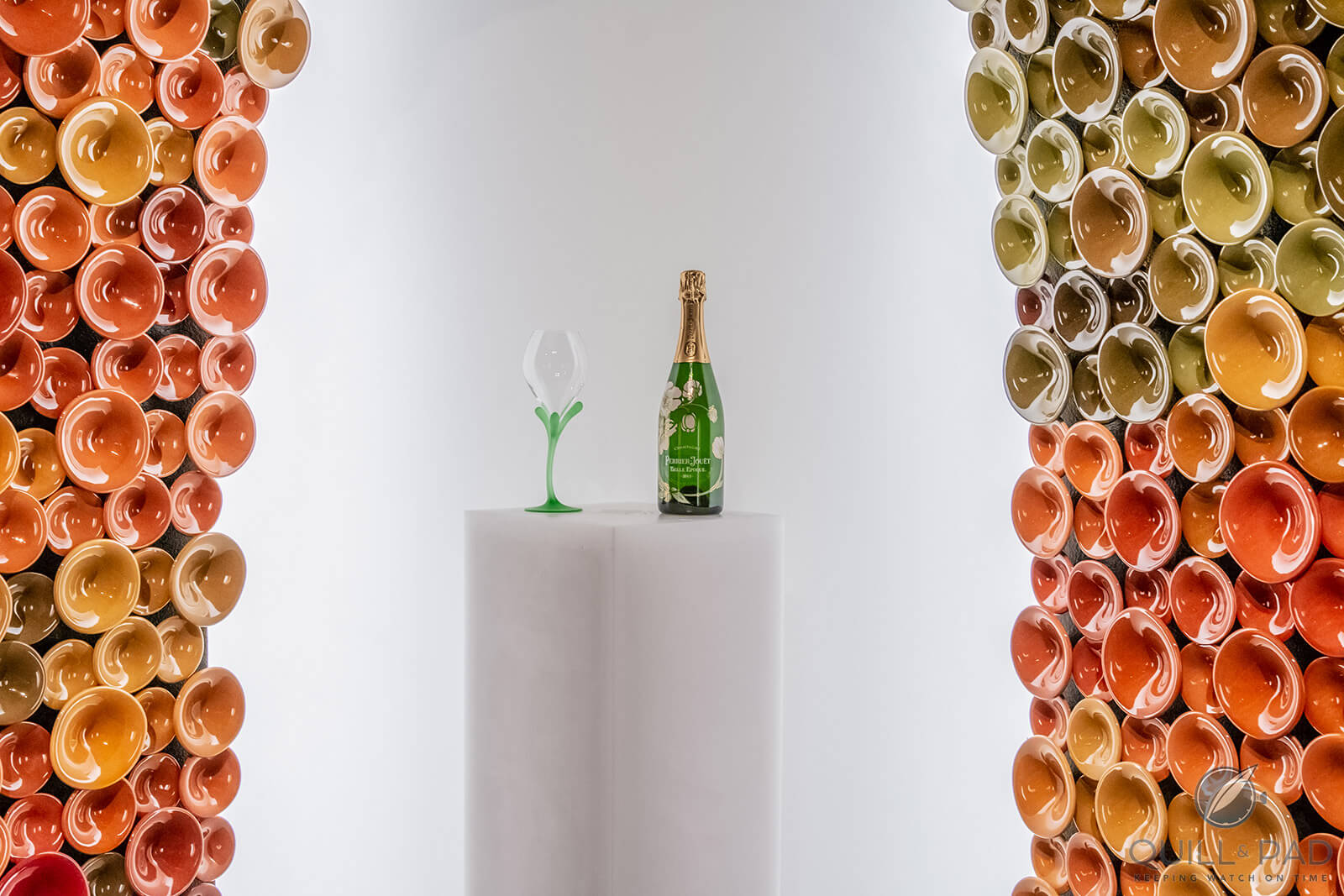
Perrier-Jouët Metamorphosis champagne glass at Design Miami 2019
AM: The six glasses explore the metamorphosis of nature into champagne, reflecting the personality of each cuvée. They embrace the Perrier-Jouët vision of reinvented nature, the history of the maison, and its Art Nouveau heritage. To achieve such a complex, crafted piece I worked closely with Fondazione Berengo, a unique Murano institution committed to introducing glass to the world of contemporary art for the last 30 years.
Q&P: Why had you accepted the commission from Perrier-Jouët and what values do you share with the brand?
AM: I find Perrier-Jouët a unique reality. Behind the well-known champagne, there is an incredible world and stories to tell. I have used these elements as a source of inspiration to create a whimsical scenario where nature, history, culture, time, and space converge.
Q&P: What are some of the projects you’re currently working on?
AM: I am now working on the future exhibition of Metamorphosis that will be presented in different countries in 2020 as well as a new project that will soon be revealed at the Salone del Mobile in Milan.
For more information, please visit www.perrier-jouet.com/en-ww/news/maison-perrier-jouet-x-andrea-mancuso-design-miami-2019.
You may also enjoy:
Perrier-Jouët Belle Epoque Blanc de Blancs: One Of The Finest Champagnes I Have Ever Enjoyed
Bollinger 2008 La Grande Année Champagne: Still Young, But Already A Classic
Louis Roederer Cristal 2008: Supreme Elegance And Ethereal Grace
Louis Roederer Rosé 2012: A Gloriously Ethereal And Elegant Champagne
Bollinger RD 2004: When It Came To Champagne (And Much Else), Madame Bollinger Had Excellent Taste





















































Leave a Reply
Want to join the discussion?Feel free to contribute!